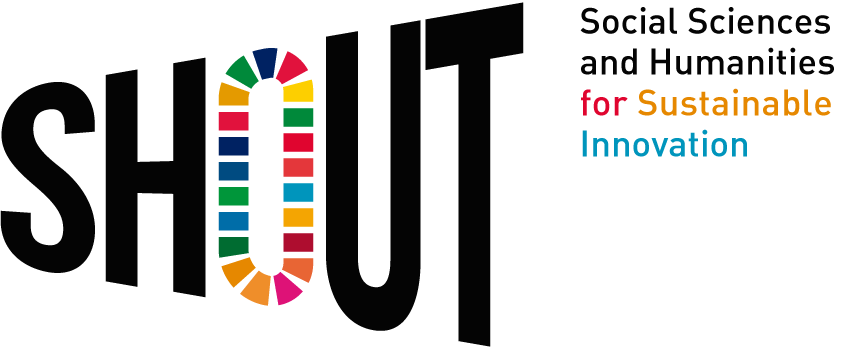What is PAR?
An approach to research, evaluation, and social change that stems from the community and takes place in favor of the community. It includes throughout the process (both design and implementation) the people,
who are mostly affected by the inquiry.
Terms Analysis
Participation + Action
Participation:
Research is a participatory process, which requires the equal collaborative involvement of all members of the ‘community of research interest’
Action:
Research should be more than just investigating a particular subject; it should also involve a part of action that seeks to actively bring positive change.
Roots of PAR
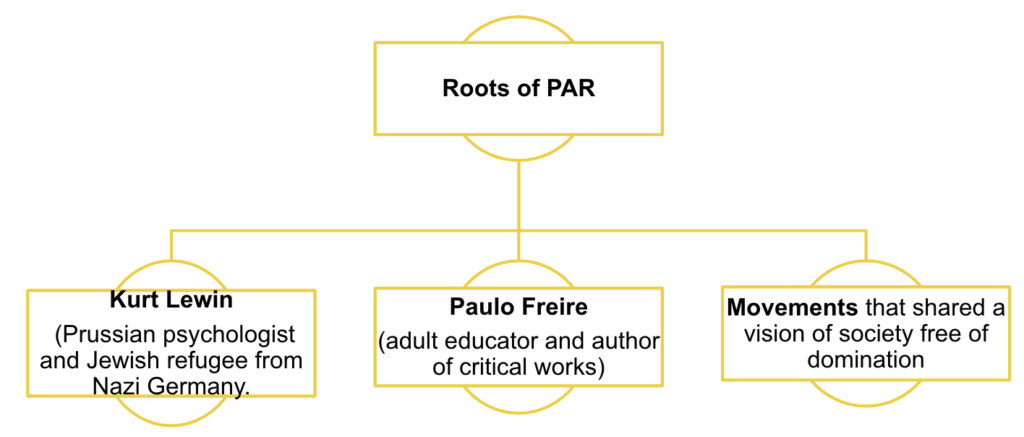
Elements of PAR
Participatory Action Research is characterized by the above elements. They are going to be further analyzed in the following slides.
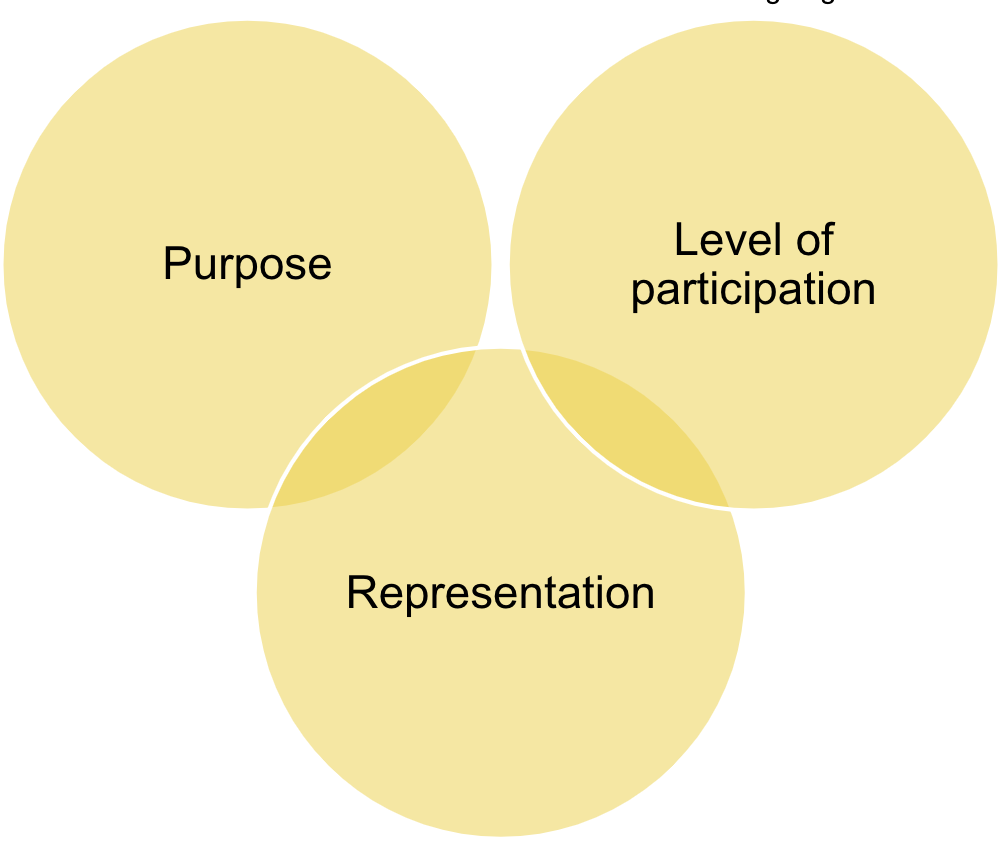
Different approaches to participatory research vary in purpose, level of participation and representation.
The particular balance of these elements depends on the intentions of those initiating the research as well as the availability of time and resources.
Purpose
A team may begin a participatory research for a number of reasons. They may have a purely functional goal, such as the generation of specific information, on a particular theme, for a new programme or policy. They might aim at the empowerment of local communities. At the end of the day, the purpose may vary, but the participation of communities in generating and analyzing data is absolutely necessary.
Level of participation
The participants from local communities engage in different levels of the research processes. In a number of occasions they are fully involved; they create the agenda and objectives, they collect and analyze data, define the goals of the research or change research activities, cooperating fully with the researchers on each stage. The level of participation usually depends on the researchers, or the organizations, that lead the research. They decide how much responsibility they are willing to bestow to the community.
Representation
In participatory research, it is very important to understand the local communities we want to study and the power relations within them. It is also crucial to include members of different social groups, who have different perspectives, motives and aims. Understanding and taking into consideration the differences and social inequalities is essential, in order to limit their effects in the research process and its outcomes.
PAR and Social Change
Participatory Action Research has different aims from traditional research. While traditional research aims to investigate a subject, PAR aims to bring social change.
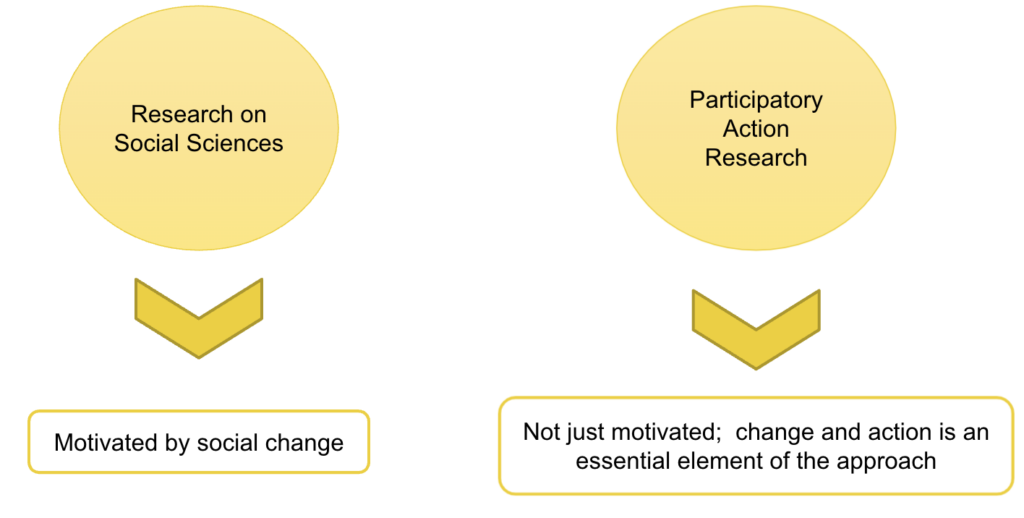
Differences
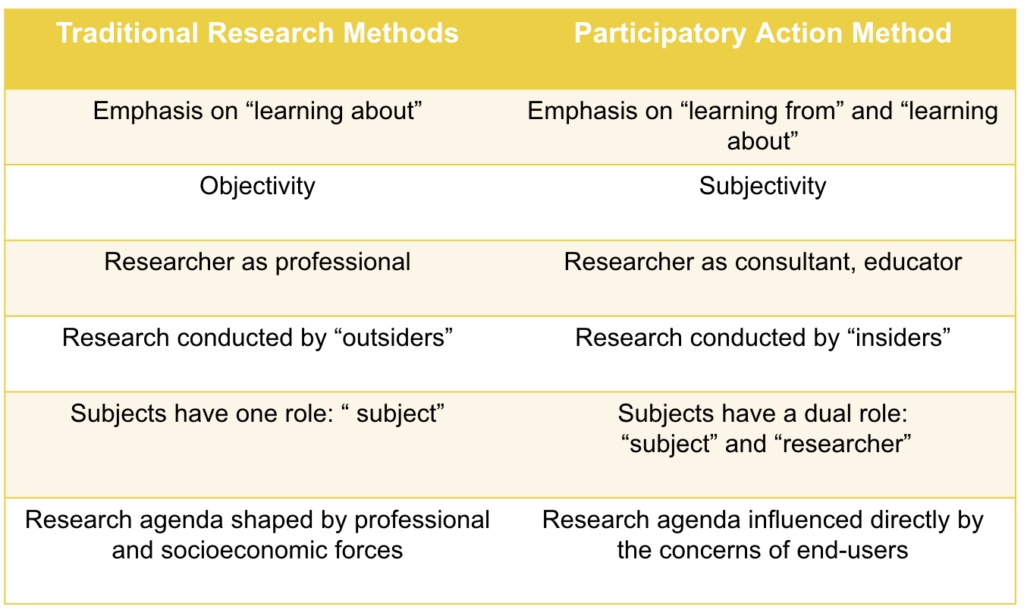
The cycle of PAR
Initial Planning
- The new cycle of the PAR process is not just a repetition of the old cycle.
- The previous cycle gives important information and shapes the next cycle.
- The PAR process is therefore self-evaluative, involving a constant evaluation of its process and modifications to adjust the research problem articulation and research practice.
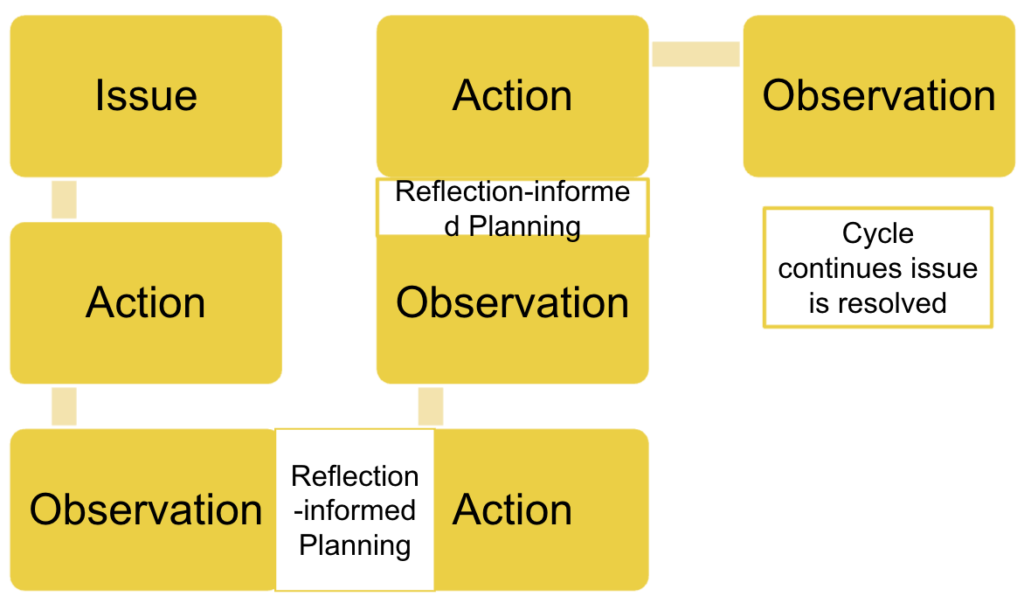
Advantages
PAR is collaborative research.
It involves the community of research interest with the research process.
The objective aids in producing practical outcomes.
PAR is applied research.
Research with practical outcomes on the community of research interest, initiating positive change.
PAR is committed research.
The commitment of the community of interest enables the research project to access important pieces of knowledge and collective memory from the community.
PAR originates from the researched.
The community has the control and leads to the identification of problems that are important to the community
Disadvantages
PAR has no research leader.
Group involvement and democratic processes may lead to competing research agendas.
PAR may be impractical.
Categorizing a group with a shared interest or problem as a ‘community’ does not automatically result in a consensus on what the problem is and how it might best be addressed.
PAR usually has no timeline.
The process, by its nature, has no fixed end date. The question then becomes: how do we know when a problem is resolved, or when has the process become ineffectual?
Benefits of PAR use
Personal Benefits
Research skills
- Develop your knowledge and awareness of the research process.
- Develop your critical thinking skills.
Gives you a voice
- Gain support from other people, that face the same issues and challenges.
- It raises public awareness.
Social supports
- A sense of community is cultivated, when cooperating with members of the community that face similar issues.
Networking
- Acquire the skill to network with others.
- Build your professionalism and confidence to interact with experts.
Advocacy
- Learn to advocate individually within your research team, for example through the decision making process.
Personal Empowerment
- All the acquired skills lead to personal growth and development.
- This research methodology is empowering, because you are actively involved in a process that improves your quality of life and parallelly fosters your relationships with the community.
Societal Benefits
United as a community
- Greater understanding and knowledge of the community through the research process.
- More cohesion and collaboration amongst members.
Social Change
- Social change is the ultimate goal of PAR methodology.
- It can be achieved through: Awareness, Creating or improving resources, Policy and Program development.
Ethical Principles
All participants must be allowed to influence the work and anyone who does not want to participate must be respected.
The researcher must ensure that all relevant persons have been consulted, and that the principles guiding the work are accepted prior to commencing the research.
The development of the work must remain visible and open to suggestions from others throughout the research process.
The researcher must also ensure that permission is obtained prior to making observations or examining documents produced for other purposes.
The researcher must accept responsibility for maintaining confidentiality throughout the research process.
Descriptions of others’ work and points of view must be negotiated with all those who participated in PAR before publishing any of the work.
